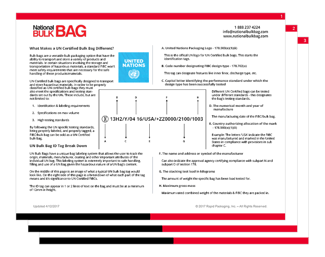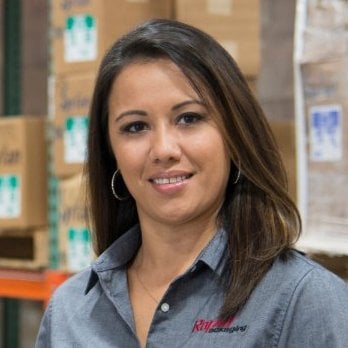Updated: 8-21-25
Part one of this series explained how UN Certified Bulk Bags are prepared and tested through vibration, top lift, and stack tests. If that post was missed, click here to read it.
This second part covers the last four tests required for UN certification: the drop test, topple test, righting test, and tear test. These tests help make sure the bags are strong and safe to use.
Drop Test
The drop test checks how well a bag can handle being dropped. Each bag is filled according to UN rules and dropped from a height based on its packaging group:
- PG I: 70.9 inches
- PG II: 47.3 inches
- PG III: 31.5 inches
The bag is dropped on the weakest part of its bottom. To pass, the bag must not lose any contents. A small, quick release of material is allowed.
Topple Test
This test checks what happens when a bag tips over. The bag is dropped from the same heights used in the drop test and lands on any part of its top. The surface must be smooth. To pass, the bag must keep all its contents inside, with only a brief release allowed.
Righting Test
This test is for bags that can be lifted from the top or the side. The bag starts on its side and is lifted upright at a set speed. Bags with two lifting straps must be lifted by one approved device. Bags with four straps must be lifted by two devices.
To pass, the bag and its lifting straps must not be damaged in a way that makes them unsafe to use.
Tear Test
The tear test checks how well a bag holds up after being cut. A knife is used to make a 45-degree cut halfway between the bottom and the top level of the contents. The test has two parts:
- Part One: A heavy load (twice the safe working limit) is placed on the bag. It must stay together for at least five minutes.
- Part Two: The bag is lifted and held in the air for five minutes. It must not fall apart.
To pass, the cut must not grow more than 25% longer than it was at the start.
Learn More
 Thank you for reading part 2 of a 2-part series on UN Certified Bulk Bags and their testing process. Check out part 1 here if you missed it.
Thank you for reading part 2 of a 2-part series on UN Certified Bulk Bags and their testing process. Check out part 1 here if you missed it.
Want to learn more? Download the Buyer’s Guide to UN Bulk Bags.
This guide includes:
- What makes a UN certified bulk bag different?
- UN Bulk Bag ID tag break down
- Details on testing procedures
- A Hazardous Materials Chart
Be sure to read this guide before purchasing UN bulk bags!






